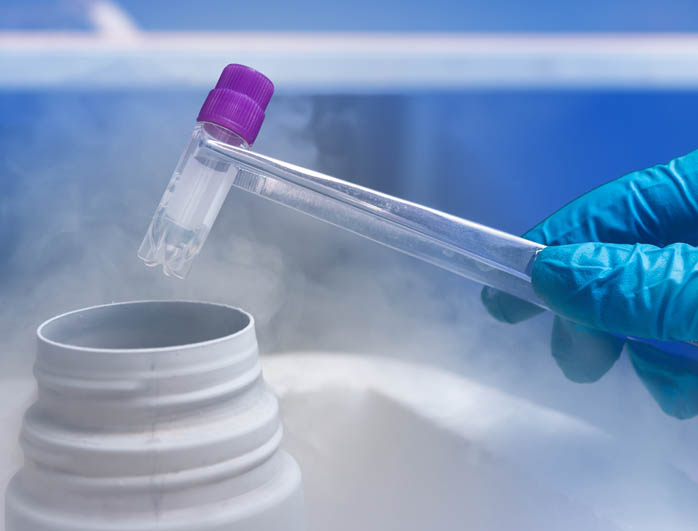In the past two decades, more difficult and expensive protocols have generally supplanted simpler and less expensive stimulation treatments. Long-term gonadotropin-releasing hormone (GnRH) agonist stimulation techniques have been in use since the middle of the 1990s. Such pricey, time-consuming regimens are not without hazards and problems in the short- and long-term. Dubai based IVF expert Dr Gautam Allahbadia shares his expertise regarding IVF Lite.
The fallout of using traditional controlled ovarian stimulation to produce multiple eggs for assisted conception is the possibility of developing Ovarian Hyperstimulation Syndrome (OHSS), increased expense, multiple pregnancies, wastage of extra embryos or the superfluous necessity of cryopreserving them. When given follicular stimulants, even some women with ostensibly normal menstrual cycles may become poor responders.
Consequently, routine IVF (IVF) is being challenged by more straightforward and simpler techniques as a result of the advancement of patient-friendly Assisted Conception Protocols. These consist of – Natural cycle IVF (nIVF), IVF with minimal stimulation (msIVF), IVF Lite (msIVF + ACCUVIT + rET) minimal stimulation IVF (msIVF)+ vitrification (freezing) and accumulation of embryos (ACCUVIT); and remote embryo transfer (rET).
“An IVF cycle with low stimulation is either; (a) a stimulation regimen in which gonadotropins are supplied throughout a cycle at lower doses and/or for shorter periods of time while GnRH antagonist is given as co-treatment, or (b) a form of stimulation in which oral substances, such as anti-estrogens, are combined with gonadotropins and GnRH antagonists,” says Dubai based IVF expert Dr Gautam Allahbadia.
The average number of days of stimulation, the total amount of gonadotropins utilised, and the average number of oocytes retrieved are all decreased by mild stimulation procedures. In comparison to traditional stimulation regimens, the proportion of high-quality and euploid embryos appears to be higher, while the pregnancy rate per embryo transfer is comparable. Furthermore, moderate techniques are clinically and financially advantageous over time due to their lower costs, better patient tolerance, and shorter time to finish an IVF cycle. To assess the cumulative pregnancy rates between the two procedures, additional prospective randomised studies are required. Dr Gautam Allahbadia informs, “In patients who respond normally or poorly to standard stimulation regimens, natural cycle IVF (nIVF), with minimal stimulation, has lately been advocated as an alternative.”
Talking about case studies, Dr Gautam Allahbadia, an IVF expert says, “Three effective case studies involving elderly patients from whose dominant follicles were extracted during the natural cycle were recently disclosed by a Japanese study. All of the patients had tried IVF with stimulation without success. In case 1, a follicle was recovered after luteinizing hormone surge was induced using a GnRHa injection. Pregnancy was achieved in cases 2 and 3 with entirely natural cycles. In each of the 16 cycles, one embryo was transferred. The researchers came to the conclusion that individuals who are elderly and whose stimulated IVF has repeatedly failed may benefit from mature oocyte retrieval in a natural cycle as an alternative.”
Oocytes were found in 391 cases (78.1 percent) of 500 consecutive natural cycle IVF treatments, and cleaving embryos suitable for transfer were produced in 285 cycles (57.0 percent). 49 patients conceived, with pregnancy rates of 9.8% every cycle, 17.1% per transfer, and 16.7% per patient. The authors came to the conclusion that natural cycle IVF is a successful treatment for individuals who don’t respond well, especially in younger women with low AMH.
In cycles with a high probability of ovulation where an impending LH surge was identified on the trigger day, low-dose, post-trigger NSAID was given in a non-randomized manner. Use of NSAIDs was linked to a greater percentage of embryo transfer (46.8 vs. 39.5 percent) and a considerably lower probability of early ovulation (3.6 vs. 6.8 percent). Live birth rates per embryo transfer (31.3 vs. 31.4%) and clinical pregnancy (39.1 vs. 35.9%) rates were comparable. In this retrospective series, short-term low-dose NSAID application reduced the percentage of unintended premature ovulations and increased the proportion of cycles that reached embryo transfer, having a beneficial impact on nIVF cycles.









































